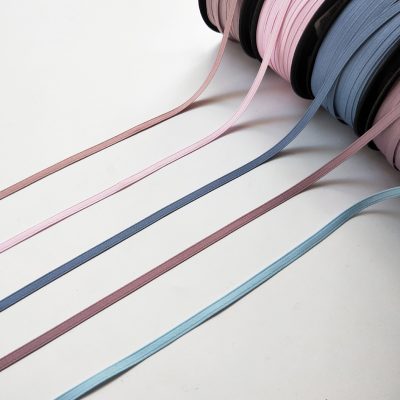A few days ago, two pieces of life service information caught the author’s attention: one was a citizen eagerly looking for the contact information of a used clothing purchase point, and the other was a company that was in urgent need of waste fiber raw materials. At first glance, there is supply and demand, and the recycling and reuse of waste Japanese textiles is not difficult. In fact, it is not only not easy, but there are also many ‘‘stuck’’.
Recycling of ribbons, webbing, hook and loop fasteners, waste edges generated in the production process, waste ribbons, waste yarns, etc. is not a new topic. This is a good thing from the perspective of reducing resource waste or industrial recycling development. At present, the industrial chain from collection, manufacturing, sales to recycling and reuse in some areas in China has also taken shape. However, progress on this great event has been slow. Both companies and industry associations have stated that “it is not easy to straighten out the relationship.” So, where is the “stuck” of conventionally produced ribbons, ribbons, edging tapes, monofilaments, hook-and-loop fasteners, oak roots, blank tapes and other waste products that are recycled on a daily basis?
First of all, the card is stuck between supply and demand. Just as the citizens who posted looking for purchase points said, the most troublesome thing about dealing with used clothes is that they can’t find a suitable purchaser. There are sometimes no purchase points, and the purpose of the purchase cannot be known on the other end. The demanding companies also suffer from the fragmentation of recycling channels. And instability, production needs cannot always be maintained by piecemeal acquisitions. On the one hand, a large amount of raw materials cannot be found, and on the other hand, production needs cannot be effectively responded.
Find the root cause of the disease on the establishment of the collection system. At present, some areas rely on government channels to recycle Japanese clothes, while other areas rely on self-built channels for recycling. I believe that the two channels can complement each other, but the most important thing is to ensure stability.
Secondly, it is stuck in extensive processing methods. Textile recycling needs to be separated, processed, and utilized according to different raw materials, using different processes. Industry insiders pointed out that if specialization and efficiency are to be achieved, companies need to increase R&D investment. Although textile technology innovation continues to make progress, it is also facing common and key technical research problems. Some companies frankly say that the recycling and reuse of waste textiles urgently requires common technical research, and to solve key technologies, there is a lack of talents and platforms.
Again, stuck in the lack of specifications. Some companies said that in the industry’s “Twelfth Five-Year Plan”, the textile and apparel industry has already had clear goals for the utilization of renewable resources, but there is still no set of practical solutions and specific implementation norms. The market lacks standardization and enterprises lack production and product standards. Will recycled textiles have potential safety hazards? Will the technologies that appear in the textile, printing and dyeing process fail to meet standards? Will they become “three-nos” products? According to industry survey information, no Fewer processing points
There are problems such as small scale, lack of technology, substandard production environment, no guarantee of product quality, and low added value of products. If management and regulation are not timely, this new industry may even become an “underground” industry. As the saying goes, there are no rules. To make consumers no longer have doubts about the safety and quality of recycled textile products, they should fill in the gaps in industry regulations in a timely manner, and formulate management regulations covering the entire industry chain from raw material supply, manufacturing, sales to market application , To promote the healthy and orderly development of this emerging industry.


























